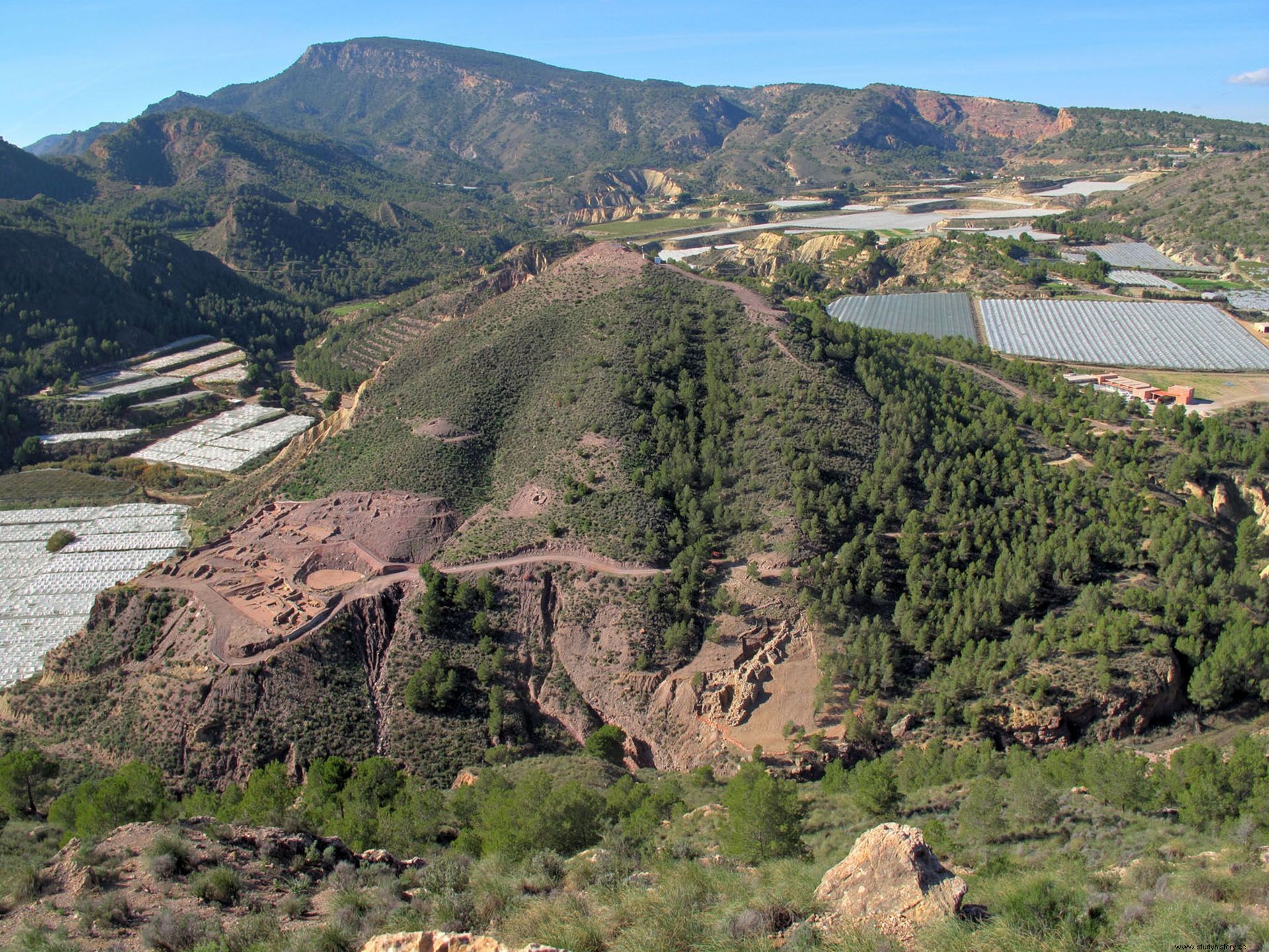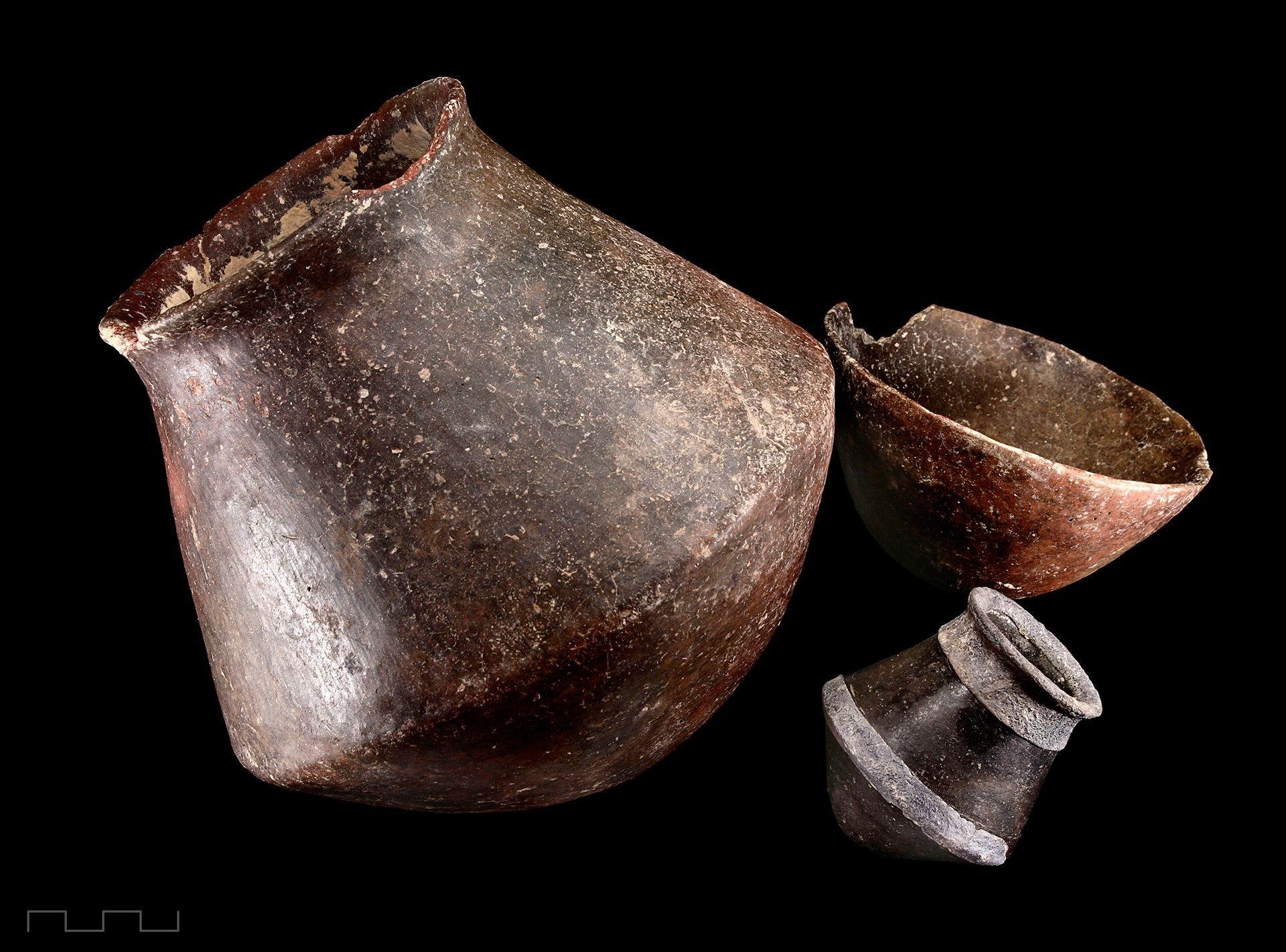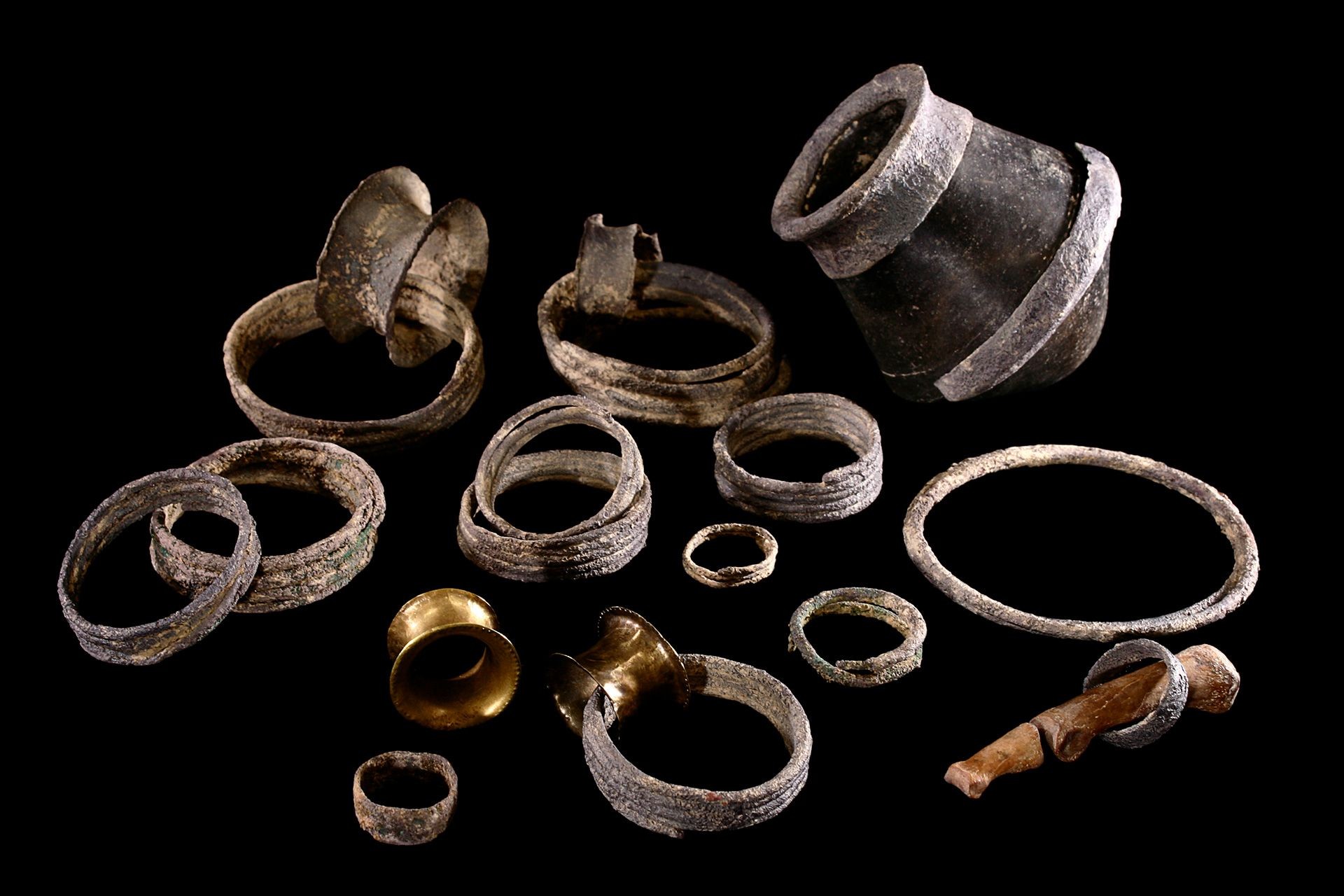
The most relevant feature of El Argar was the establishment of acute political and economic inequalities, which have led to qualifying it as one of the first States in Europe. However, his interest is not limited to the exciting topic of the emergence of permanent social dissymmetries, but also includes other very interesting dimensions for our present and future, such as the formation of social identities, the relationships between sexual condition, kinship and gender, links between violence and politics, and the ecological impact of economic strategies.
The society of El Argar and the Bastida-UAB Project
The Bastida-UAB Project It began in 2008 with an objective that continues today:to learn about the formation, development and collapse of the society of El Argar. To this end, a systematic archaeological investigation has been carried out at three sites in the Region of Murcia:La Bastida and Tira del Lienzo (Totana) and La Almoloya (Pliego-Mula). All three are situated in the core area of Argaric society and cover its entire temporality. This, together with the excellent conservation of their findings, make them privileged observatories to delve into the knowledge of a prehistoric society.
After more than a decade of research, the main result is to have shown that the society of El Argar had a level of political and economic complexity comparable to that of a Civilization or State. This does not mean that El Argar had the same range of objects as other civilizations of its time, such as Babylon, the Middle Kingdom in Egypt or China Erlitou/Xia, but rather that they all shared being societies divided into classes, founded on the exploitation economic and institutionalized violence.

The discoveries and analytical results that support this conclusion are of various types and, in large part, come from research carried out by our team or in collaboration with professionals from other national and international institutions. Although the lines of work in progress provide varied results, perhaps the most relevant could be included in four chapters:
1. Urbanism:the revolution of the cities . Life in cities is a consubstantial characteristic of Civilization. In turn, civilized life is reflected in a revolutionary territorial structure, which implies political borders and an internal hierarchy of settlements. Excavations at La Bastida have revealed elements typical of a true city, at an unexpected time and place for archaeological research.
- Demographic agglomeration . The city is, above all, a stable and large-scale human aggregate. With an area of almost 5 hectares completely covered by stone buildings, it housed a population of around a thousand inhabitants and was the most densely populated settlement on the Iberian Peninsula at its peak, some 3,800 years ago. It was the first to face unprecedented challenges:from the government of large communities to the maintenance of public health in environments with a high population density.
- Monumental fortification system . The architecture and layout of the defensive elements of La Bastida make it a unique example in continental Europe of its time. It reports on new forms of specialized combat and polyorcetic innovations whose closest resemblance in space and time is located on the periphery of the civilizations of the eastern Mediterranean basin. La Bastida materialized a break with the peninsular tradition of the Copper Age and was a symptom of a territorial power endowed with a strong military base.
- Large-scale water engineering and management . Water is a basic resource for human life, which becomes strategic with the transition to urban life. In one of the neighborhoods of La Bastida, the largest water storage structure in European prehistory was built:a pool with a dam almost 21 m long and with a capacity of more than 300,000 litres. The raft, like the cistern located at the gates of the city, captured water by gravity. Added to these tanks is an underground aqueduct carved into the rock over 70 m long, which supplied intramural water from an external supply point. The provision of water was crucial both for economic activities and for survival in situations of siege.
- City or capital. "City" means coexistence and diversity, living in a community made up of groups with very diverse functions and tasks, sometimes even opposite ones. In La Bastida neighborhoods are identified where different human groups developed specialized trades. But, furthermore, no city is self-sufficient, nor is it limited to its walls. La Bastida became a true capital that dominated a territory of some 3,000 km 2 from which it extracted food, raw materials and human resources. A network of administrative and craft enclaves, like the one excavated by our team in Tira del Lienzo, linked the countryside with the city, within the framework of a centralized organization.

2. The “First European Parliament”:the architecture of government and power . Politics permeates our lives in one way or another, but it has not always been an activity carried out by specialists, nor has it had institutions for its exercise. As was the case with urban planning, there too certain societies crossed an unprecedented threshold. Recent excavations at La Almoloya have brought to light a site specialized in meeting and political deliberation. In this "Parliament Hall", some fifty leaders and representatives made government decisions that affected the daily lives of thousands of people.
The "Parliament Hall" was part of a large residence that we can describe as a palace. An aristocratic group of that society lived there, within the framework of a motley network of residential and economic buildings that have been almost entirely rebuilt on an area of almost 3,000 m 2 . About 40 km from La Bastida and on a unique promontory due to its strategic control, La Almoloya was its complement within a complex political territory.

3. Ideology, identity and spectacle:death at home . The society of El Argar offers the unique possibility of knowing both the living spaces and the funerary contexts, located under the ground of the settlements. The corpses were deposited in a fetal position inside pots, stone cists or artificial caves. Our excavations have revealed more than 200 graves, inside which some of the members of the Argaric society rested.

The study of the skeletons and the offerings that They accompany them, they manifest the profound economic differences that separated people, differences perpetuated through hereditary provisions for the transmission of rights and privileges or, conversely, to prohibit their enjoyment.

But the graves not only denote economic differences, but that connote shared values.
- The individual as the center of social representation. It is impressive to see the secular persistence of the same funerary ritual, despite the fact that each of the thousands of private funerals took place away from the public gaze.
- The sexual condition as a social condition. Being born a man or a woman meant assuming specific social roles that were reflected in death through a differential arrangement of bodies and, in part, through the assignment of characteristic offerings.
In short, all the ideological richness of a complex society synthesized in the funeral spectacle, as in few cases does prehistory offer us.

4. The environment as physical support of social life . The southeast of the Iberian Peninsula is one of the most arid regions in Europe. At a time when concern for environmental sustainability is central, it is important to know the role of human action in environmental degradation in order to measure its effects. In this regard, the results suggest that the environmental conditions in the Argaric era were more humid than today, and that agriculture was viable without the need for large irrigation infrastructures. However, overexploitation of the environment has also been detected, degraded by the surplus demands of the economic system.
Final words
The enrichment of the archaeological legacy and the scientific achievements as a result of the investigations in La Bastida, Tira del Lienzo and La Almoloya and the Bastida-UAB Project are based on a work philosophy as a team and in a conception of archeology as an activity that produces knowledge by and for society. An interdisciplinary and systematic perspective, from the excavation of sites to the dissemination of discoveries and results adapted to different audiences and in different formats, must be the key to bringing our past surprisingly current in its teachings to our present.
Learn more
http://www.la-bastida.com/
http://grupsderecerca.uab.cat/asome
http://www.ruta-argarica.es/
https://es-es.facebook.com/LaBastida.Totana/

